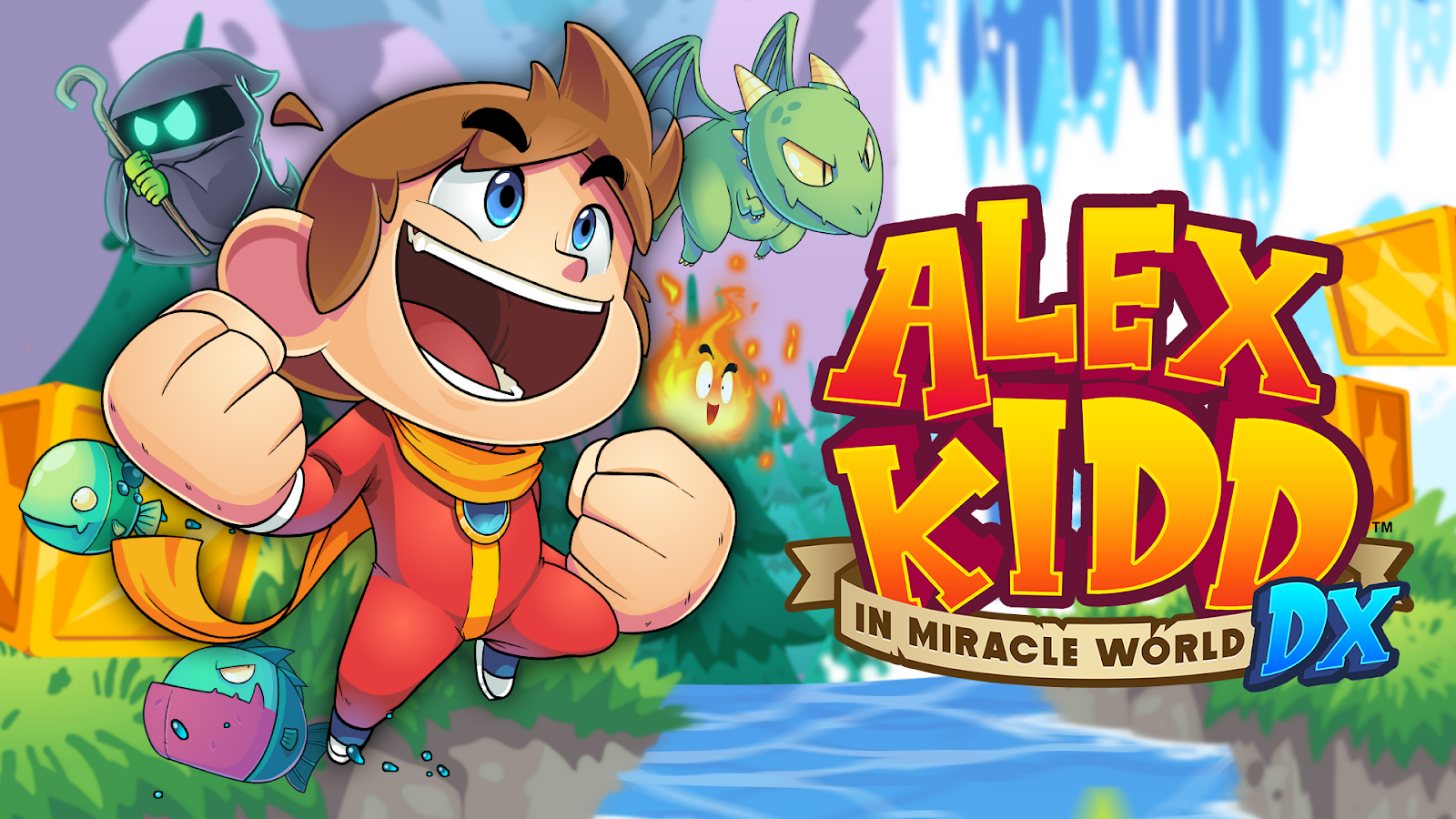Games change as the way we play games changes. Coin-Op arcade games functioned differently from games you’d bring home and play on a TV. At home, console games changed as more people began playing them. Since Alex Kidd in Miracle World first launched as a built-in game for the Sega Master System in 1986, games – and the way we play them – have changed a lot. Playing Alex Kidd in Miracle World DX makes those differences painfully obvious in spite of a beautifully fresh coat of paint.
Miracle World Reimagined
Alex Kidd in Miracle World from 1986 has an 8-bit art style that definitely looks its age, but Alex Kidd in Miracle World DX has a whole new look to it. Alex and each of the monsters and levels he faces have been remade in a wonderful pixel art style to meet the standards of today’s games. This is one of those instances where you might hear someone who played the original shout “It looks just how I imagined it as a kid!”.
It’s not just that the characters and the levels themselves have been reskinned either. Entire new animations and details in both the background and the foreground have been added to really bring out the vibrant world in a way that was impossible back in 1986.
The new look is definitely the highlight of this remake, but the people at Merge Games definitely respected the nostalgia associated with the original game and therefore made it super easy to jump back in time and see what things looked like in the original. At the press of a button (ZR on the Nintendo Switch version for purposes of this review) the game transitions to the original look and back again whenever you want – even in the middle of a precise jump (so be careful!).
Unfortunately, you might often find yourself swapping art styles for reasons other than seeing the old look. It seems like the actual game mechanics have remained largely untouched, which means that sometimes the new art style doesn’t always line up with the sometimes pixel perfect movements the game requires. You’ll find that judging the distance at which you can punch and at which enemies will kill you is a bit easier in the old art style view.
Janky Janken
Alex Kidd, our small monkey-like protagonist, descends from his mountain-top martial arts training facility to find a kingdom filled with monsters led by a group of evil anthropomorphic hands with an obsession for rock paper scissors. This is the wacky world you take Alex through on a quest to save the kingdom of Radaxian.
Alex Kidd in Miracle World DX is at its core a platformer, but it can boast quite a few mechanics other than jumping that aim to add some additional flair to gameplay. Alex Kidd can punch through enemies and stone blocks and he collects money bags that can be exchanged at a shop between levels for other unique power ups that enhance your abilities. Occasionally, you can even purchase or are given a vehicle such as a motorbike or “pecticopter” that further changes how you play.
Though Alex Kidd has some interesting options available to him, using those gameplay elements often feels bad. The core mechanics of how Alex Kidd and his enemies move and attack have largely remained unchanged. Jumping is sometimes inconsistent in responding to directional input, and you’ll likely find yourself getting killed when it doesn’t seem like you’re close enough to the enemy, especially in the new art style.
Obviously it’s important to keep the original feel of games in a remake, but there are things that can and should be done with older game mechanics to make sure they’re as responsive and consistent as what modern day gamers expect.
Of Ancient Design
The biggest issue with Alex Kidd in Miracle World XD has to be the archaic level design. Clearly people who played the original will have fond memories of each of the levels, boss fights, and enemies, but to someone who didn’t play the original its age will show in all the wrong ways. Games from the era of the 1986 original were small games due to the technical limitations of how much code you could fit on a game cartridge (the Sega Master System cartridges could hold 4MB of code).
This means that developers tended to consider replayability as a big factor in their games. Picture a young kid in 1986 sitting down to play Alex Kidd in Miracle World for the first time. Things like figuring out which power up boxes held the unkillable spector who chases Alex to almost certain death just meant more play time. Smashing through each brick to see what parts of the level you could explore was always interesting. Dying to unpreventable obstacles wasn’t frustrating, it was something more to come back to later.
In a modern context, however, running into what often feel like unfair traps set up by the level designers is just plain frustrating. Alex Kidd in Miracle World and this new DX remake are unforgiving games, and what might have been fun for a kid in 1986 feels like bad level design.
Mercifully, there’s an option to turn on infinite lives, which alleviates this issue to some degree, but also causes its own issues. Collecting money and power-ups immediately becomes irrelevant, and the levels become even more flat and overly simple. Some levels might take you 20-30 seconds to complete while others you can breeze through up until some especially finicky jump or enemy pattern.
Alex Kidd in Miracle World DX is an undoubtedly pretty remake of a very old game, but under the hood it’s still a very old game and anyone who plays it will immediately be able to tell. Unfair and barren level design mixed with inconsistent mechanics and dull enemies unfortunately drag down what is otherwise a beautiful game. If you’re nostalgic for the original game, it could be fun to come and see how what DX brings to the table, but otherwise, Alex Kidd is best left remembered.






